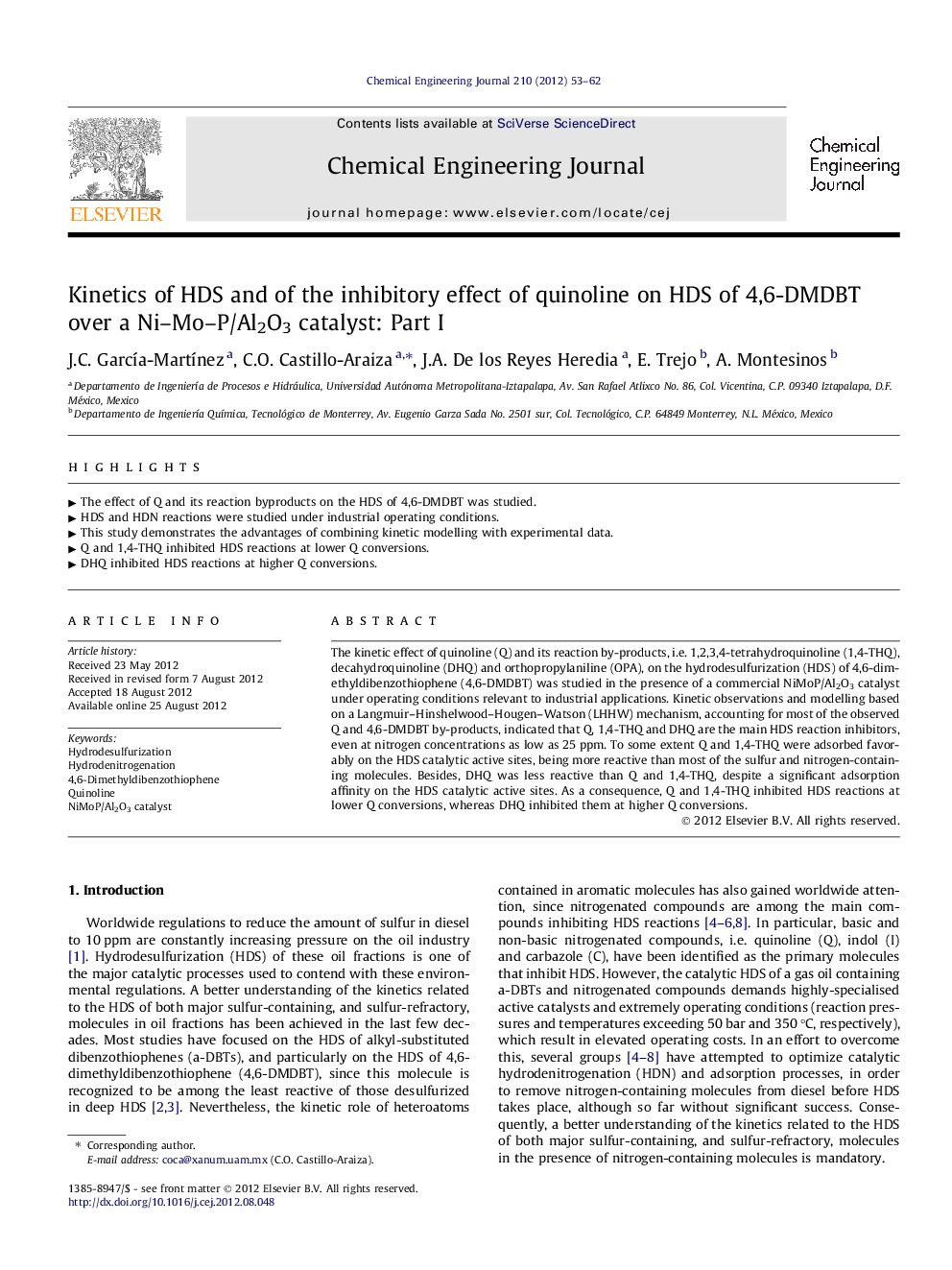| کد مقاله | کد نشریه | سال انتشار | مقاله انگلیسی | نسخه تمام متن |
|---|---|---|---|---|
| 149361 | 456431 | 2012 | 10 صفحه PDF | دانلود رایگان |

The kinetic effect of quinoline (Q) and its reaction by-products, i.e. 1,2,3,4-tetrahydroquinoline (1,4-THQ), decahydroquinoline (DHQ) and orthopropylaniline (OPA), on the hydrodesulfurization (HDS) of 4,6-dimethyldibenzothiophene (4,6-DMDBT) was studied in the presence of a commercial NiMoP/Al2O3 catalyst under operating conditions relevant to industrial applications. Kinetic observations and modelling based on a Langmuir–Hinshelwood–Hougen–Watson (LHHW) mechanism, accounting for most of the observed Q and 4,6-DMDBT by-products, indicated that Q, 1,4-THQ and DHQ are the main HDS reaction inhibitors, even at nitrogen concentrations as low as 25 ppm. To some extent Q and 1,4-THQ were adsorbed favorably on the HDS catalytic active sites, being more reactive than most of the sulfur and nitrogen-containing molecules. Besides, DHQ was less reactive than Q and 1,4-THQ, despite a significant adsorption affinity on the HDS catalytic active sites. As a consequence, Q and 1,4-THQ inhibited HDS reactions at lower Q conversions, whereas DHQ inhibited them at higher Q conversions.
► The effect of Q and its reaction byproducts on the HDS of 4,6-DMDBT was studied.
► HDS and HDN reactions were studied under industrial operating conditions.
► This study demonstrates the advantages of combining kinetic modelling with experimental data.
► Q and 1,4-THQ inhibited HDS reactions at lower Q conversions.
► DHQ inhibited HDS reactions at higher Q conversions.
Journal: Chemical Engineering Journal - Volume 210, 1 November 2012, Pages 53–62